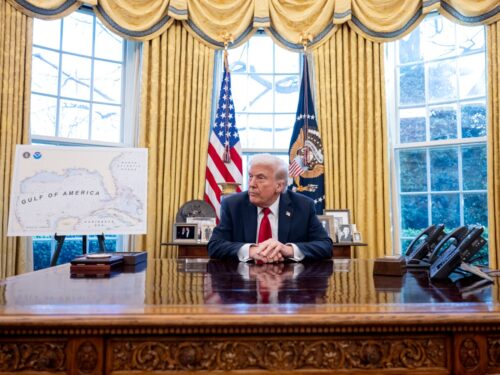Article • Dean Baker’s Beat the Press
Donald Trump Is Confused: Tariffs and Taxes

Article • Dean Baker’s Beat the Press
Fact-based, data-driven research and analysis to advance democratic debate on vital issues shaping people’s lives.
Center for Economic and Policy Research
1611 Connecticut Ave. NW
Suite 400
Washington, DC 20009
Tel: 202-293-5380
Fax: 202-588-1356
https://cepr.net
Donald Trump being confused is not exactly news, but he seems to be in a heightened state of confusion over what he wants to do on tariffs. He and his aides can’t seem to decide whether he’s going to give us the biggest tax increase on working people ever or whether he will be revitalizing US manufacturing for the rest of the century. It does make a difference.
The tax point is straightforward. According to his aide Peter Navarro, they are looking to collect $6 trillion over the next decade in tariff revenue. It’s not clear this number makes any sense (it would require tariffs of almost 20 percent on all imported goods and would mean no reduction in the volume of imports), but there is no doubt that substantial revenue can be raised from taxing imports.
Import taxes are highly regressive, meaning that tariffs will cost ordinary working people a much higher share of their income than for high income people. This is because working people tend to spend most or all of their income, while high income people save a large portion of their income.
Also, working people are more likely to spend their money on the goods subject to tariffs, whereas higher income people spend more money on services like travel, restaurants, and gyms. Tariffs are a good policy if the goal is whack the sort of people who voted for Donald Trump.
The alternative story is that the point of tariffs is to revitalize US manufacturing. This is at direct odds with the goal of raising large amounts of revenue, since if we produce more goods here, we will be importing less. And, if we import fewer goods, we get less tax revenue.
As many of us have pointed out, revitalizing US manufacturing does not seem like a likely outcome from Trump’s tariff policies. Close to half of the goods we import are intermediate goods like engine parts and airplane components.
High taxes on these imports will make it more expensive to manufacture cars and planes in the United States. Over a long enough period of time, we could make these intermediate goods here also, but that could be many years and in the meantime our auto and airplane manufacturers would be at a serious disadvantage in world markets, and we would be paying much higher prices here at home.
The other problem with the Trump revitalization story is that even in the most optimistic scenarios it doesn’t make much sense. Even if we somehow managed to get from our current trade deficit of 3.0 percent of GDP to balanced trade, all by increasing manufacturing (as opposed to service or agricultural exports), it would only increase manufacturing employment from 8.0 percent to 9.0 percent of our labor force.
Furthermore, the manufacturing jobs created are not even likely to be especially good jobs. Historically manufacturing jobs carried a wage premium because they were disproportionately union jobs. This is no longer the case. The unionization rate for manufacturing workers is now 8.0 percent, only slightly higher than the 6.0 percent rate for the rest of the private sector.
There is another story on Trump’s tariff motivations. His administration compiled a list of complaints against our major trading partners. These are mostly relatively small-bore things, like objecting to EU restrictions on bioengineered foods or Canada’s tax on digital services like those provided by Facebook or Google.
What stands out about the Trump administration’s list of grievances is that these are the sort of complaints that always come up with trade. The US has made progress getting some concessions on these items over the years, just as our trading partners have made progress in getting some of their complaints addressed. But these are the sort of issues that have been addressed through routine negotiations. In the past no one seemed to feel they required a full-fledged trade war.
The other point about these items is that even if Trump were to get everything on his list of complaints it wouldn’t have much impact on the economy. Facebook and Google might have somewhat higher profits if they didn’t have to pay a digital service tax in Canada, which will put a few more dollars in the pockets of their shareholders and top management, but the rest of will not see much benefit. It won’t feel quite like the “Liberation Day” that Trump has promised.
Anyhow, it is probably best not to try to get into Donald Trump’s head and determine what he might actually be thinking about trade. What we can say is the arguments he and his administration have put forward are mutually contradictory and for the most part, don’t make much sense. We stand to see a big hit to the economy and do irreparable damage to longstanding international ties for Donald Trump’s confusion.